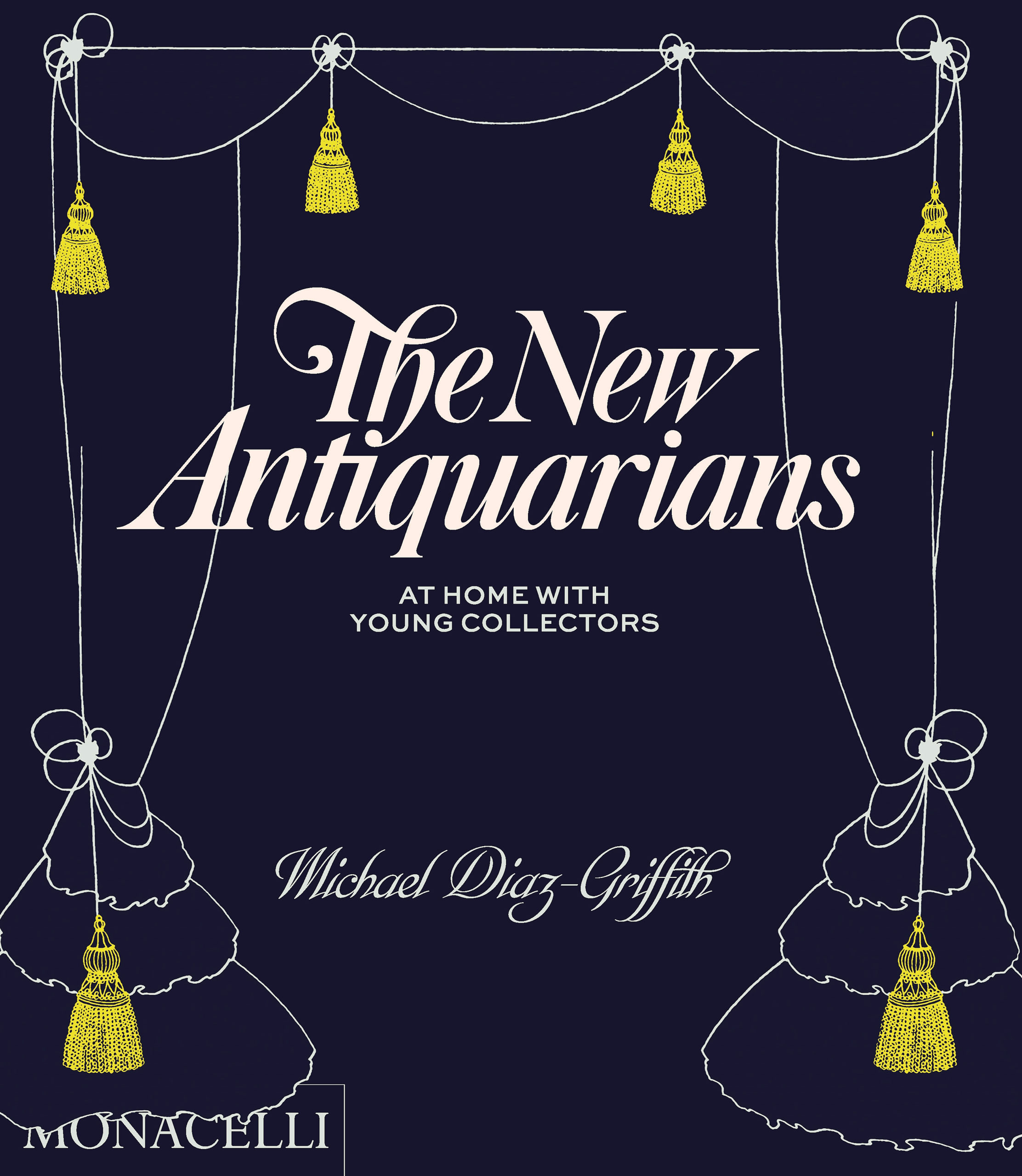
Review by Z.G. Burnett; Images Courtesy of Monacelli/Phaidon
NEW YORK CITY — The New Antiquarians: At Home With Young Collectors, invites readers into the homes of 17 young designers, dealers and collectors who are actively dispelling the myth that “kids just aren’t into this stuff.” The New Antiquarians shows how today’s young adults are incorporating yesterday’s material culture into their lives and homes. At the head of these trailblazers is its author, Michael Diaz-Griffith.
Diaz-Griffith is executive director of the Design Leadership Network and former associate executive director of The Winter Show, among many other distinctions. He was included in House Beautiful’s 2020 Visionaries list, in which he described his salon-like gatherings as “almost a support group” for those who wished to learn about and discuss antiques with their peers. This depth of knowledge is palpable in the book’s featured living spaces; each contains a healthy, multi-disciplinary library that is not just for aesthetics.
As a book, The New Antiquarians is as much an art object as the pieces on display and is already a document of its time. Production began in March of 2020 and, due to multiple pandemic-related constraints, was only completed by Diaz-Griffith and his team about six months before its publication. Rather than rarified and exclusive, the sitters’ generosity in opening their homes is characteristic of collecting’s new, growing generation.

Michael Diaz-Griffith —Lia Clay Miller photo.
Diaz-Griffith grew up in Alabama, initially outside of the antiques and collecting field. His maternal grandmother was an antiques “picker/dealer,” but his parents were not collectors and this inheritance was auctioned off shortly after her passing. “As a result,” he explained, “I grew up in new houses filled with new things: a very sanitary, air-conditioned world.” The collecting gene skipped a generation on both sides; Diaz-Griffith’s paternal grandfather turned his head with memorabilia, arrowheads and natural specimens. A book-collecting neighbor also provided early mentorship. These two strong influences were veterans, and “both [were] connected to a wider, deeper, national culture that was in abeyance in my childhood’s Bible Belt,” he explained. “I am very grateful for that early exposure, however fleeting, to humanistic values and ways of living.” Diaz-Griffith’s parents indulged their young son’s growing interests in historic architecture and antiques by bringing him to the Deep South’s house museums, where he was introduced to collecting and connoisseurship on an institutional level.
This pursuit spurred Diaz-Griffith across the country and then the Atlantic for his studies and numerous positions of responsibility in New York City, London and more over the past 15 years. He is also co-chair of The Winter Show’s Young Collectors Night, which serves to answer the question, “Where are all these new clients?” This initiative brings a new generation into these spaces, where Diaz-Griffith found himself being the youngest person in the room. At age 36, this is often still the case. “Some people are interested in your perspective as a younger person, but others discount it due to a perceived lack of experience,” he said. “In the Twentieth Century, I would be in the prime of my career. Nowadays, I’m categorized as ‘young,’ but that is only because the generational ceiling has been raised — and antiques is a field that does not lend itself to early retirement.”
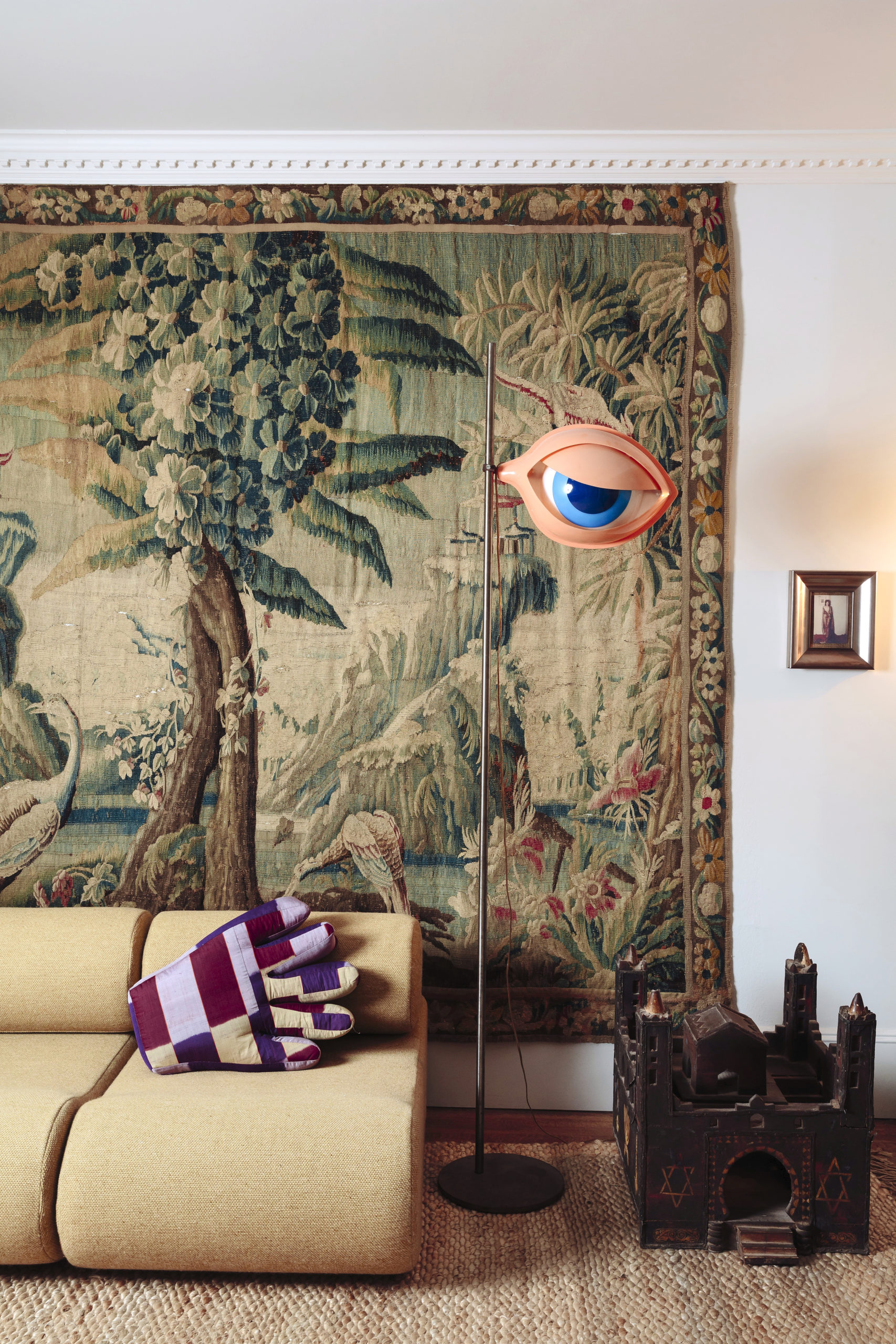
Adam Charlap Hyman, New York City —Brian W. Ferry/Monacelli.
Diaz-Griffith emphasizes how open and progressive the antiques trade has been in the past, especially to women, Jewish and gay collectors and dealers. “In important ways, the antiques world still is a refuge for eccentrics,” he continues. “People who think differently about the world and its aesthetic and ontological possibilities.” Diaz-Griffith adores and honors his older colleagues and mentors, yet issues persist. “If we’re being candid, there can still be a great deal of snobbery and ageism in the field,” and he adds that more space needs to be created for younger leaders to continue to ensure the market’s survival. “It is not that we lack experience, we have simply had different experiences,” Diaz-Griffith explains. “Tapping into our perspective is critical for ensuring that the field remains relevant and in dialogue with the broader culture.”
This might be a hurdle for those with the perspective that young people have no interest in antiques. As Diaz-Griffith explains, this belief is “a combination of economics and echo chambers” that goes back at least 20 years, into the childhoods of many young dealers and collectors. After the post-9/11 dive and financial crisis of 2007-08, the antiques market faced financial and existential challenges that continue to be enhanced by generational divides. While the price for masterworks remains steady, the market for home furnishings and collectibles suffered, especially as Generation X collectors embraced Midcentury Modern and the minimalist design zeitgeist. These competing collecting tastes were “initially seen through the lens of disruption rather than continuity.” Diaz-Griffith added, “It makes sense that this was discouraging to dealers and collectors, both on a cultural level and because their capital was immobilized in warehouses full of seemingly unwanted art and objects.”

Emily Adams Bode Aujla & Aaron Singh Aujla, New York City —Brian W. Ferry/Monacelli.
The thing is, they were not unwanted, often just out of reach for the same reasons the market had declined. “Being a Millennial, I knew that young people liked old things,” he continued. “We liked the color, pattern, complexity and originality that the art and material culture of the past often possess.” Middle-class people of this generation did not have as much buying power as Diaz-Griffith came of age and entered the antiques world, “We were looking but not buying, or making do with flea market finds and faux-historic home accessories.” These were often used to decorate rented apartments as most young people were successively priced out of the housing market, and looked for less expensive and physically less precious home goods to move from place to place.
Meanwhile, wealthier Millennials were also rejecting their parents’ taste in favor of contemporary art and vintage design. Collectors and dealers were only exposed to these newcomers, many of whom were their children or people their children’s age. The foil was an overproduction of cheap, mass produced furniture that lower-income people preferred due to ease and price. This created a “social echo chamber” that perpetuated as dealers closed ranks, whether intentionally or subconsciously, all but excluding the type of Millennial that Diaz-Griffith represents, “[those] with genuine interest but little early exposure and no generational wealth.”
Many such people now populate the work force of the arts, both in the market and in museums, weathering the “apocalyptic mood” Diaz-Griffith encountered at the beginning of his career. Students from middle and lower-income backgrounds continue to pursue a career in this field, yet the requirements of living and working in some of the world’s most expensive cities to gain experience in low-paying, sometimes unpaid, positions are not sustainable for those without financial support or a private income. Keeping young professionals in the arts poses more challenges, for which Diaz-Griffith has some expert insight. “Organizational leaders in the arts and design must offer talented young employees a clear pathway to seniority,” he recommends. “In museums, too many are stuck at the junior or associate level beneath a seemingly permanent layer of senior curators.” If this lack of upward mobility does not cause young employees to drop out of the field, they become “fatally demoralized.”
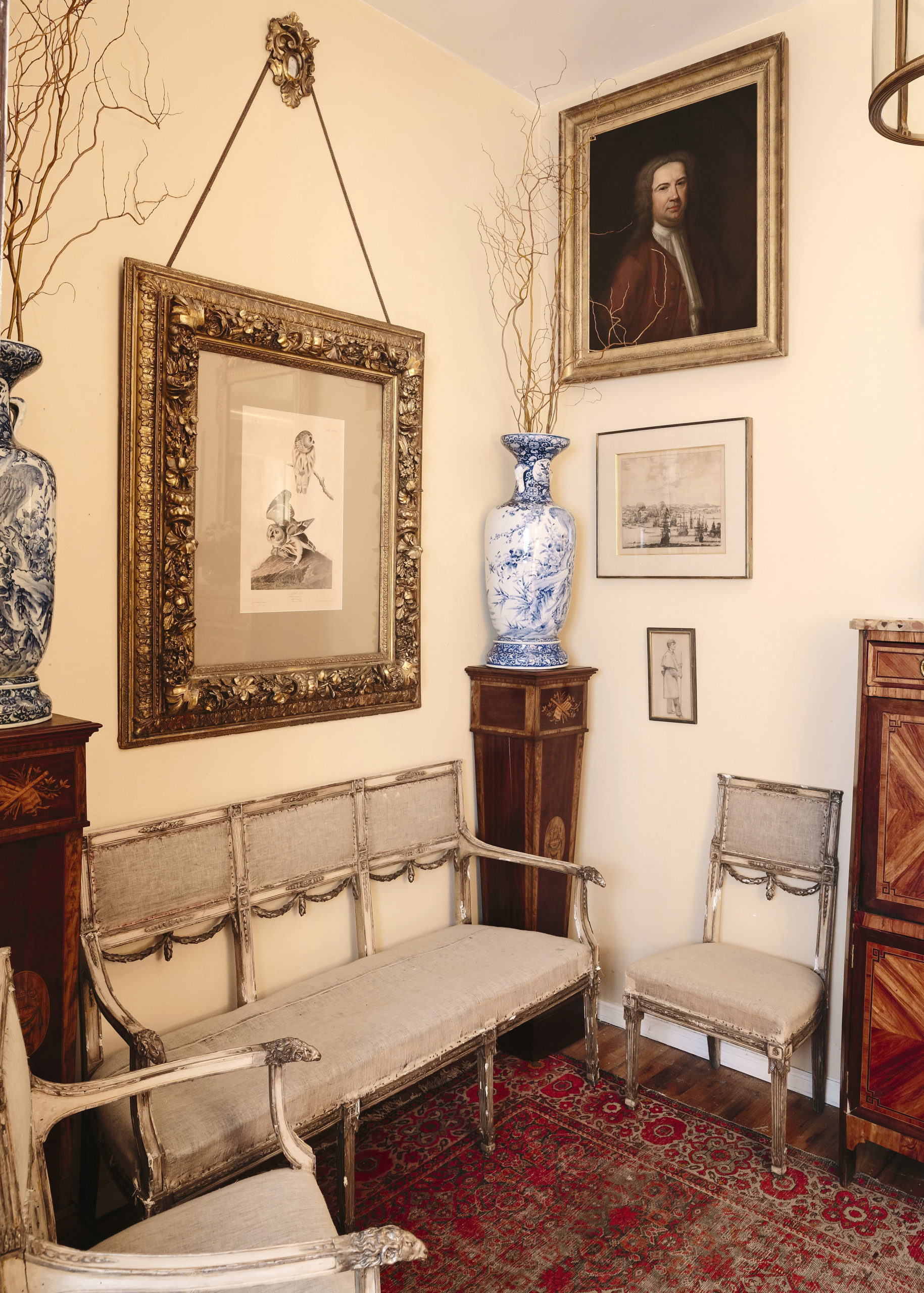
Collier Calandruccio, Brooklyn, N.Y. —Brian W. Ferry/Monacelli.
Mentorship, offering a clear pathway to partnership and succession planning is another way of building the next generation of dealers and collectors. “We all want the field to thrive long into the future, yet we tend not to create lasting institutions in the trade context, family businesses aside,” says Diaz-Griffith. “When it’s well-executed, a partnership model can guarantee both (a) long-term talent retention for an antiques business as well as (b) guaranteed income for the senior partner, even when they are no longer able to work.” The nature of mentorship includes that, one day, dealers will have to make themselves redundant. This is not an easy truth but, he continues, “it’s the best way to ensure our passions — including our expertise — survive into the future.”
The tension between generations was exacerbated as the market adapted to new, rapidly developing technologies, creating what Diaz-Griffith calls “a digital echo chamber.” The internet sped up an already-steady, 300-year decline in formal ways of living and many dealers continue to reject social media altogether. “Because dealing is a passion profession, and most dealers run a small shop, that rejection isn’t totally surprising,” he explains. “Dealers didn’t — and don’t — want to exchange lives focused on objects and clients for, essentially, a digital marketing job. But that didn’t — and doesn’t — mean that digital tools are inherently bad, it’s just that digital work may need to be delegated.” In many cases, it does, which means that trust must be placed in younger generations to use these tools for the benefit of veteran businesses. Dealers’ reticence to share their point of view, imagery expertise on social media relinquishes millions of potential converts to the cause. “However it’s accomplished, it does need to happen,” Diaz-Griffith continues. “A Chippendale chair floating around TikTok is better than no Chippendale chair being seen in that influential environment, period.”

Jared Frank, Los Angeles —Brian W. Ferry/Monacelli.
Diaz-Griffith, a firm believer that the medium is not the message, said, “I’ve been heartened to see a plurality of the antiques world move onto social media, but there are still dynamics that remind me of the echo chamber of yore.” By cross-posting content on Facebook and Instagram, he creates a controlled engagement study by platform. “A historic object or interior on Facebook might yield a dark, sad comment thread about how ‘no one’ appreciates antiques anymore, while the same object or interior posted to Instagram might yield dozens of effusive comments from younger people.” It is this latter positivity and interest that Diaz-Griffith encourages dealers to court, “I want them to see and feel that enthusiasm and hopefully my book can be a window onto it.”
How can dealers do this without seeming overeager or, in the current parlance, “cringe?” Diaz-Griffith’s advice is twofold, “Dealers should seek to be themselves…If you are eccentric and determinedly old-fashioned, create a wild throwback website and present your authentically cantankerous self on social media — people will love it!” Another suggestion, “Hire younger people, mentor them in your expertise, but also listen to them. They are likely to understand the younger client base and have actionable ideas for reaching it. Allow ambition to work in your favor.”
With The New Antiquarians, Diaz-Griffith seeks to reframe collecting as an accessible pursuit for young collectors of all levels and backgrounds, especially those who find it difficult to see themselves in collecting. “Thanks to the internet, there is more specialist information available for novice connoisseurs than ever before,” and prices remain “on the low side.” He also recommends the tried and true venues such as flea markets and eBay to build a collection slowly over time, producing a beautiful offshoot: connoisseurship. “Know that you don’t need to form an instant collection. In fact, you probably shouldn’t,” he recommends. “In the meantime, a couple of fascinating, story-filled objects in an otherwise typical interior have the capacity to elevate that space, inspire you daily and spark interesting conversations — and who knows where the journey could lead?”
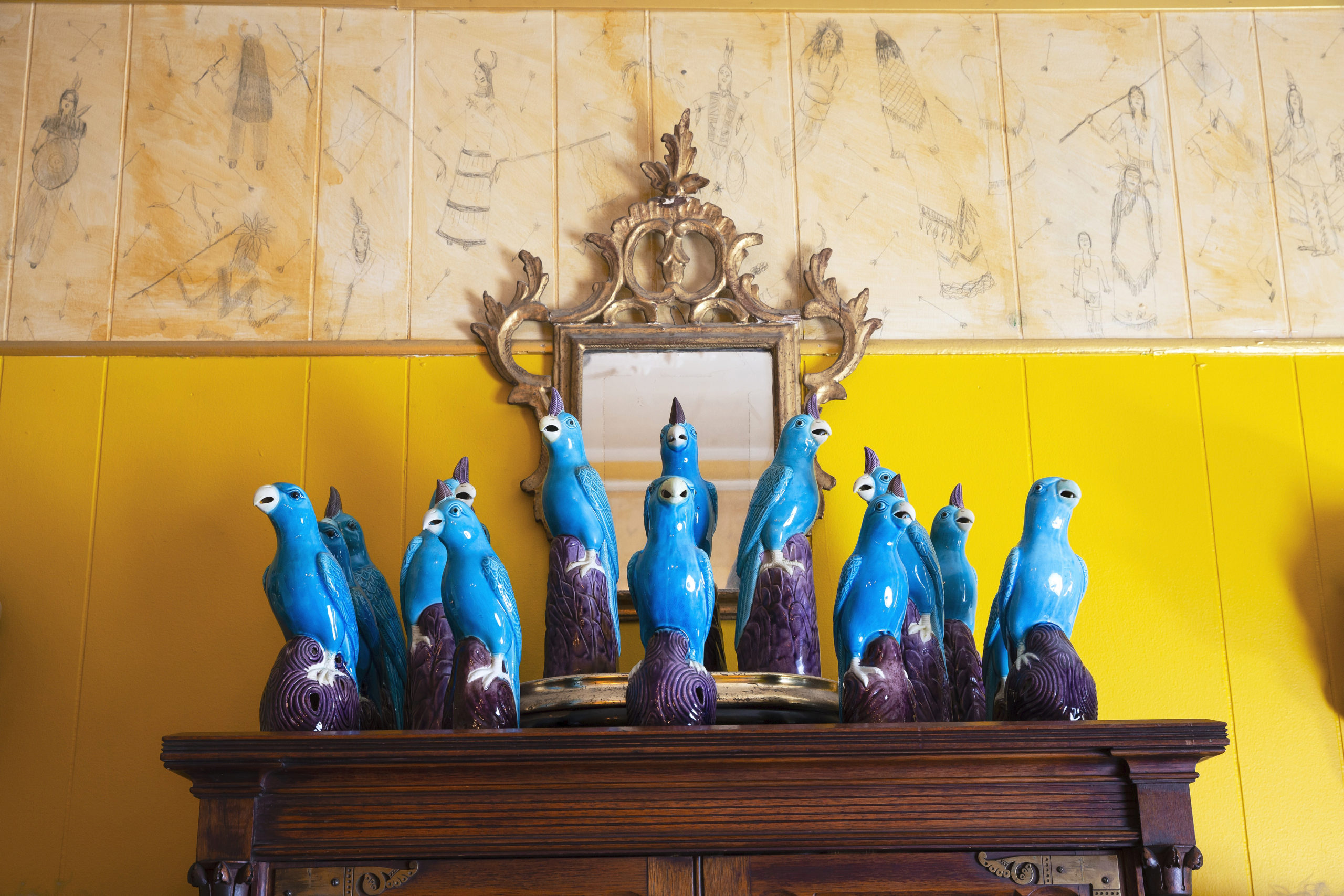
Sean McNanney and Sinan Tuncay —Brian W. Ferry/Monacelli.
Also, I advise young collectors to attend art and antiques fairs and auctions,” Diaz-Griffith continues, “There is nothing like learning by touching, smelling and handling objects, and dealers truly do love to share. If a young collector happens upon a dealer who doesn’t like to share, I advise them to keep moving — the next dealer will share, and extensively. They may even become a critical mentor in your pursuit of connoisseurship.”
As the antiques world turns, the demographics of both dealers and collectors are changing along with it. “There can never be enough transparency around pricing, sourcing and the preponderance of trade secrets that can make antiques and collecting inaccessible to newcomers,” Diaz-Griffith explains. “If we want people to come to antiques, we need to take down the gates.” No longer the private cabinets of elite white patrons, antiques shows must adapt to welcome these new perspectives on the objects shared throughout our collective histories.
“So many antiques dealers do deep, original research and it is not uncommon for a private specialist to know more about a particular discipline than their institutional counterparts,” he continues. “That is a superpower. At a time when younger people want to rethink history and come to terms with the past in all its complexity, pursuing serious research and communicating it freely and clearly is a terrific way to attract new audiences and develop a dialogue with them.” Collaborations between young scholars and curators on publications and installations has proven successful in contemporary art and design; this could be a way forward for antiques “to support younger talent, discover new perspectives and expand reach among new audiences.”
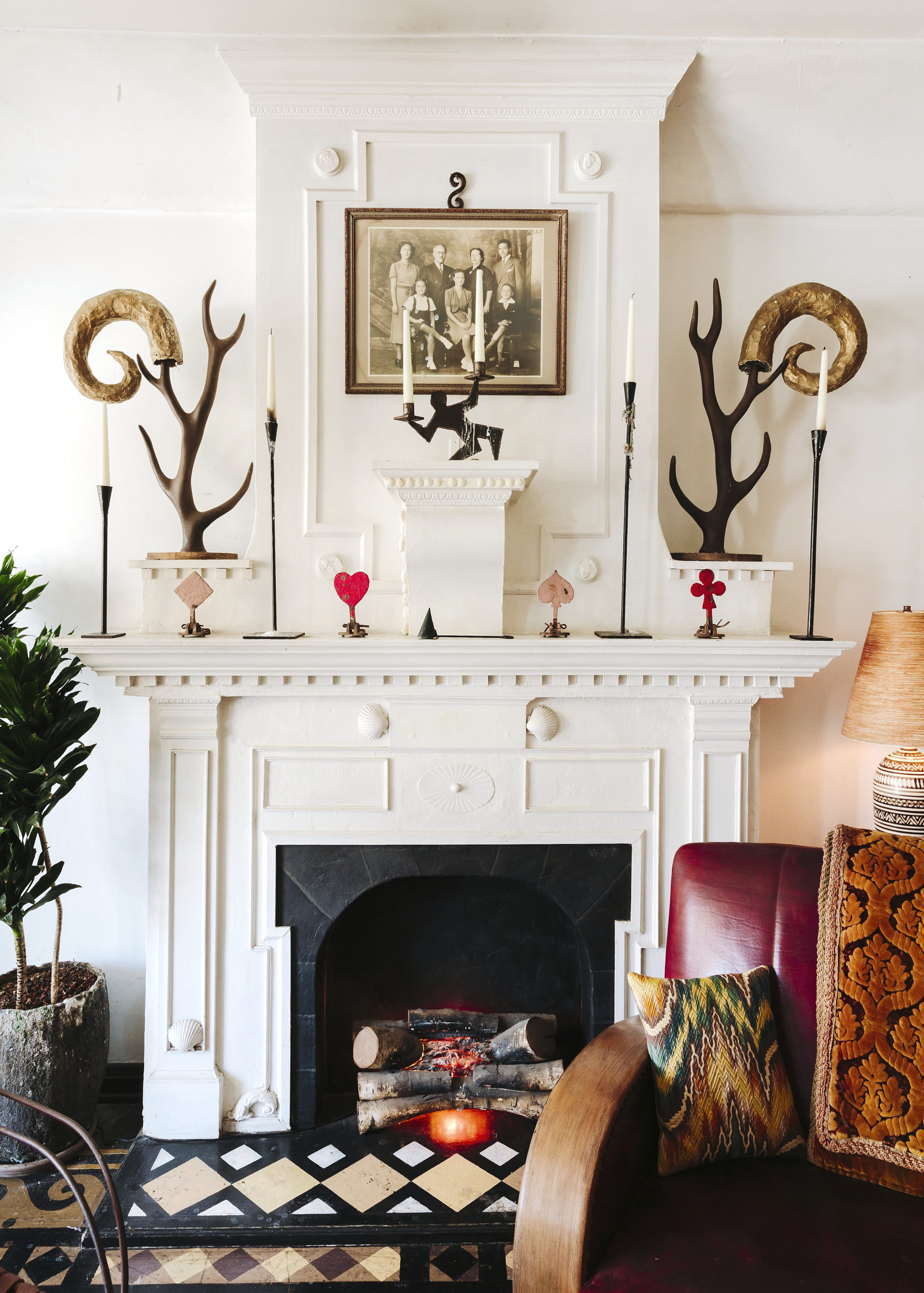
Jared Frank, Los Angeles —Brian W. Ferry/Monacelli.
Diaz-Griffith also encourages dealers and curators alike to shift their focus from the context of reception to the context of production, from “The Parlor” to “The Workshop.” This would tell a more complete story of our beloved objects, reaching an even wider audience. “Craft is a universally appealing topic, and there are so many stories of production that are unexplored and underdiscussed — many of them involving Black craftspeople, Indigenous makers, women and girls,” he concludes. “Material culture matters, and it will provide a lifetime of fascination, wonder and excitement to the collector, no matter their budget or previous exposure.”
The New Antiquarians: At Home With Young Collectors is available for pre-order, shipping on June 28. For information, www.phaidon.com.



















